Farmers not doing well
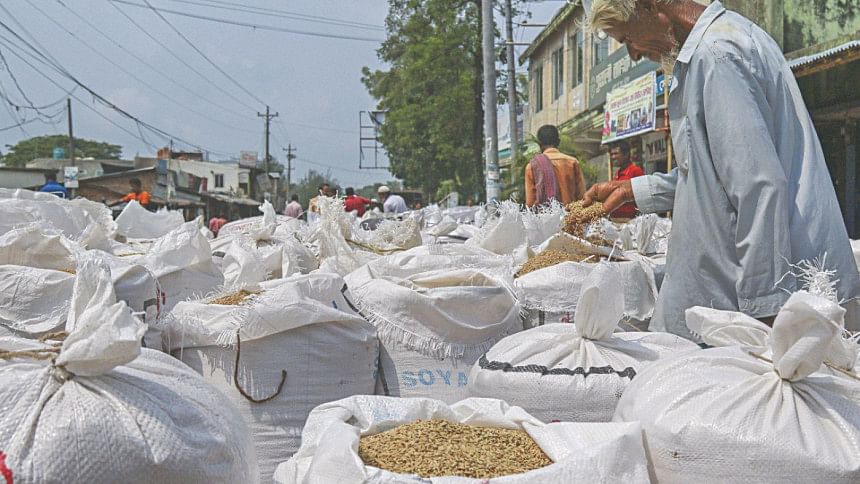
With sacks of paddy piled on both sides of the road at Barmi Bazar in Gazipur, farmers were waiting under the scorching sun to sell their produce at a fair price.
But there was nothing to make them happy. The offers the buyers were making only deepened their frustration, written on their faces.
“My heart wrenches when I am offered Tk 400 or Tk 450 for one maund of paddy,” said Sohrab Hossain, a farmer of Dargadhala village in Barmi union.
“Only I know how hard I worked to grow paddy but I have never counted it in terms of money. I just want back the cash I spent,” he said.
For growing BRRI Dhan-28 on one bigha of land, Sohrab spent Tk 16,800 including Tk 2,000 on ploughing the land, Tk 2,000 on planting saplings, Tk 3,300 on irrigation, Tk 2,000 on fertiliser, Tk 1,500 on pesticide, Tk 5,000 on harvesting and Tk 1,000 on transportation.
In his estimate, Sohrab excluded cost of his own labour and other expenses like daily meals for hired labourers.
Production of paddy was 22 maunds from each bigha of his land, and he got Tk 12,760 selling it at maximum Tk 580 per maund. That means he incurred a loss of around Tk 4,040 per bigha.
In the last Boro season, he sold his paddy at maximum
from page 1
Tk 750 per maund, he said.
According to a market survey by the Department of Agriculture Marketing, production cost of Boro paddy is Tk 988 for one maund. It includes family labour, interest on working capital and cost of lease or rent of land.
During a visit to Dhan Mahal of Barmi Bazar on Wednesday, a well-known paddy market in Gazipur region, the high yielding varieties BRRI 28 and BRRI 29 were selling at Tk 500 to Tk 550 per maund.
The price went up to Tk 580 in the afternoon.
In Naogaon, Jirashail paddy, a fine variety, was selling at Tk 700 per maund. The price was up to Tk 1,000 last year, said Jahur Ali, a farmer in Raninagar upazila of the district, over the phone on Friday.
In the hoar region of Sylhet, paddy is selling at maximum Tk 600 a maund. Last year, it was Tk 750, said Abdul Kader, a farmer of Madongouri village in Kulaura upazila of Moulvibazar.
In Kushtia, the price range of different varieties is Tk 580 to Tk 850 per maund.
In Dinajpur, BRRI 28 and BRRI 29 are selling at Tk 550 per maund whereas last year it was Tk 850, said Shisnabi Mondol, a famer in Surail village under Chirirbandar upazila.
The paddy market has been witnessing such low prices since the end of January, a month after Aman paddy hit the market.
A maund of paddy was selling at about Tk 600 in early February, and the price further dropped to around Tk 500 after Boro harvesting started in late April.
Farmers in different areas blamed millers for the fall in paddy prices.
The millers, who are the major buyers of paddy, are not making purchases since the harvests began, they alleged.
Addressing the allegation, KM Layek Ali, general secretary of the Bangladesh Auto Major and Husking Mills Association, said millers are still overburdened with the paddy they bought in the last Aman and Boro seasons.
“Our warehouses are full and we don’t have money. So, how do we buy the paddy?”
Abdul Muyeed, director of the field service unit at the Department of Agricultural Extension (DAE), said a bumper production of paddy in the current Boro and last Aman season has played a role in pulling paddy prices down.
In the immediate past Boro season, the hybrid, high yielding and some local varieties were grown on around 49.34 lakh hectares of land, which is one lakh hectares more than the target.
In the last Aman season, rice production stood at 1.53 crore tonnes, or 13 lakh tonnes more than target, the director added.
The total production cost of a maund of paddy was around Tk 960, he said.
Layek Ali, secretary of the millers’ association, also cited the same reasons for the fall in market prices.
After crop damage in the hoar areas in 2017 due to flash floods, a large quantity of rice was also imported, he mentioned.
In 2017-18, around 39 lakh tonnes of rice was imported, while it is 2 lakh tonnes till May 9 this fiscal year, according to data from the food ministry.
Layek Ali further said if the government decides to export fine rice, farmers may then get good prices.
Abdul Muyeed, director of the field service unit, said the government was preparing a list of farmers to buy paddy directly from them.
This effort would increase paddy prices in the country, he added.
However, Agriculture Minister Abdur Razzaque said procuring paddy directly from farmers would not push up the price.
“It’s very difficult to solve the problem immediately,” he said on Saturday. “Export could be one solution. But this will create a problem in case of natural calamities.”
The food ministry data till April 9 shows the stock of rice in the government-owned warehouses is 10.36 lakh tonnes. It is quite sufficient with no possibility of food grain deficit currently, reads a statement on the ministry website.
The total production of rice in 2017-18 was 363 lakh tonnes, according to the DAE.
The total rice consumption in Bangladesh is 352 lakh tonnes per year, meaning that there is a surplus, the US Department of Agriculture (USDA) cited in its GAIN report 2019.
[Our Correspondents from Gazipur and Dinajpur contributed to the report]

 For all latest news, follow The Daily Star's Google News channel.
For all latest news, follow The Daily Star's Google News channel. 

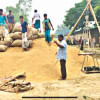
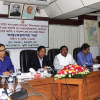

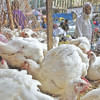
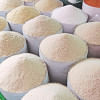

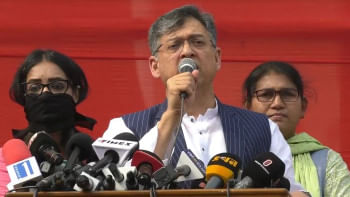
Comments